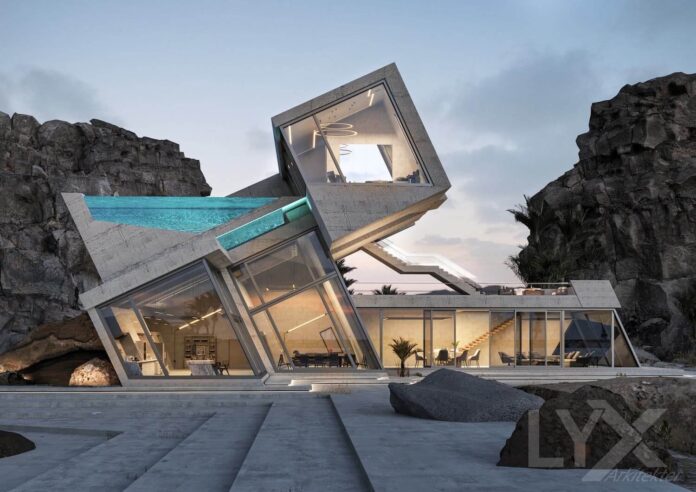Architecture is more than the art of designing buildings — it is the blueprint of human existence. Every structure, from the humblest hut to the tallest skyscraper, tells a story about the people who built it, the environment in which it stands, and the purpose it serves.
Architecture defines skylines, shapes communities, influences behaviour, and preserves history. It is the physical manifestation of human creativity, ingenuity, and aspiration.
The Historical Roots of Architecture
The origins of architecture trace back to the earliest shelters built by humans to protect themselves from the elements. In prehistoric times, caves, huts, and simple structures were designed primarily for survival. As societies evolved, architecture took on cultural and symbolic roles. Ancient Egypt’s pyramids stand as monumental expressions of religious belief and power. The Parthenon of ancient Greece remains a timeless icon of harmony and proportion. The Roman Empire, with its aqueducts, amphitheatres, and road systems, demonstrated the engineering might of its time.
In medieval Europe, Gothic cathedrals such as Notre-Dame in Paris soared heavenward, embodying spiritual aspiration and intricate craftsmanship. The Islamic world produced architectural masterpieces like the Alhambra in Spain and the Blue Mosque in Istanbul, blending artistry with spiritual meaning. The Renaissance revived classical ideals, blending symmetry and science, paving the way for modern architecture.
Architecture as an Art and Science
At its core, architecture is both an art and a science. The artistic side involves creativity, aesthetics, and the ability to evoke emotions through design. The scientific side requires precision, mathematics, physics, and engineering to ensure structures are functional, durable, and safe. The best architecture seamlessly integrates beauty and practicality.
For instance, Frank Lloyd Wright’s organic architecture philosophy sought harmony between human habitation and the natural world. His famous Fallingwater house in Pennsylvania blends stone, water, and wood into a design that feels like a natural extension of its surroundings. Similarly, Zaha Hadid’s futuristic works push the boundaries of form while maintaining structural integrity.
Cultural Significance of Architecture
Architecture is a mirror of society. It reveals what communities value, what they aspire to, and how they live. Temples, mosques, churches, and shrines illustrate spiritual life; markets and public squares embody commerce and social interaction; government buildings project authority and governance.
The materials used, the layout of streets, the style of houses — all are cultural fingerprints. In Japan, minimalist wooden houses reflect simplicity and harmony with nature. In Morocco, vibrant mosaics and courtyards embody hospitality and artistry. In Ghana, traditional compounds and modern structures alike blend heritage with progress.
Sustainability and Green Design
In the 21st century, architects are tasked with addressing urgent environmental concerns. Buildings consume a significant portion of the world’s energy and resources, so sustainable architecture — also called green building — has become a necessity.
Sustainable design focuses on energy efficiency, renewable materials, water conservation, and minimizing waste. Techniques include passive solar heating, green roofs, rainwater harvesting, and natural ventilation systems. Notable examples include Singapore’s Gardens by the Bay and the Bullitt Center in Seattle, which is often called the greenest commercial building in the world.
The Role of Technology in Architecture
Technology is revolutionising architecture at every stage — from concept to construction. Building Information Modelling (BIM) allows architects to create detailed 3D models that integrate design, structural engineering, and construction processes. 3D printing enables rapid prototyping and even full-scale printed buildings, offering cost and time efficiency.
Artificial Intelligence (AI) is being used to analyse urban data, optimise building performance, and predict maintenance needs. Drones provide aerial surveys, while Virtual Reality (VR) and Augmented Reality (AR) help clients visualise projects before they are built. These tools not only enhance creativity but also improve accuracy and sustainability.
Challenges Facing Architects Today
The modern architect faces a complex web of challenges. Urbanisation is pushing cities to expand vertically and horizontally, often at the expense of green spaces. Climate change demands innovative solutions to reduce carbon footprints and adapt buildings to extreme weather conditions. Housing affordability is another pressing issue, with architects tasked to create cost-effective yet liveable designs.
Cultural preservation poses its own challenge. In rapidly modernising cities, traditional architectural identities risk being overshadowed by generic glass-and-steel towers. Architects must find ways to blend innovation with heritage.
The Future of Architecture
The future of architecture is likely to be defined by adaptability, sustainability, and technology. Smart buildings, capable of adjusting lighting, temperature, and energy use automatically, will become more common. Modular construction, where components are prefabricated and assembled on-site, will speed up building processes and reduce waste.
There is also a growing movement towards biophilic design — integrating nature directly into buildings through green walls, indoor gardens, and open-air spaces. Urban farming could become a standard feature in high-rise developments, merging food production with living spaces.
Moreover, space architecture is emerging as a field, with designs being developed for habitats on the Moon and Mars. As humanity explores beyond Earth, architecture will play a key role in making extraterrestrial life possible.
Conclusion
Architecture is not static; it evolves alongside humanity. It holds the power to inspire, to connect, and to transform. From ancient temples to futuristic skyscrapers, architecture is both a reflection of our history and a projection of our future. It is the art of turning vision into reality, of shaping spaces that shape how we live.
As we stand at the crossroads of innovation and tradition, the role of architecture in building not just structures, but communities and sustainable futures, has never been more vital.
Source: Hot FM Online
